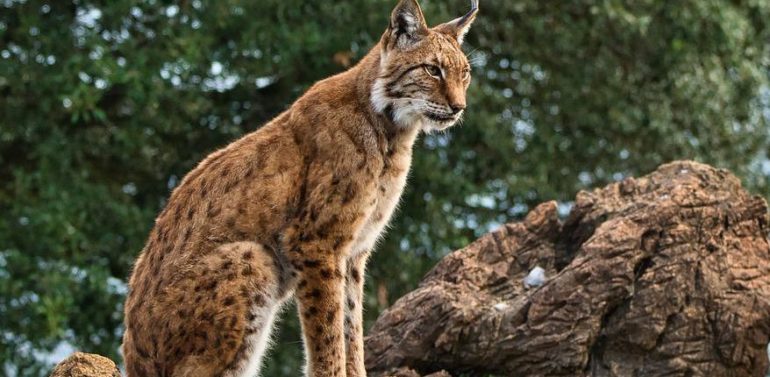
The population of the Iberian lynx in Andalusia has reached a new historic record with 522 specimens, a figure that consolidates the community as a benchmark in the conservation of this emblematic species. This is reflected in the census published this Friday, prepared by the staff of the Junta de Andalucía attached to the Iberian Lynx Recovery Plan and members of the CBD-Habitat Foundation, which indicates that the population of this feline has grown by 16 specimens, which is 3.1% more than in 2020.
The efforts being made in Andalusia to preserve this endangered species are bearing fruit. In 2002, the lynx population in the region barely reached 94 individuals. Currently, the 522 specimens registered are distributed over an area of more than 1,600 square kilometres distributed in different areas and population nuclei. Concerning the total of the Iberian Peninsula (1,365 specimens), Andalusia is home to 38.2%.
Among the data collected in the 2021 census, the increase in the number of cubs stands out, rising from 157 to 174 individuals. This represents an increase of 10.8%. Andalusia continues to be the region with the highest number of breeding females in the whole Iberian Peninsula, with almost 44.8% of a total of 277. This data is very important for the International Union for the Conservation of Nature (IUCN) to re-categorise the lynx so that it is no longer declared an ‘endangered species’ but a ‘vulnerable species’. For this to happen, an indispensable requirement must be met, which is to maintain 125 breeding females for at least five consecutive years.
The collaboration of Spain and Portugal, four autonomous communities, conservation organisations, private companies, scientific bodies, and the hunting sector is what is allowing the lynx to reign once again in the Iberian Peninsula and its future is practically guaranteed after 20 years ago there were not even a hundred specimens. The efforts of the Andalusian community are now focused on the connection between the different existing populations in Andalusia, as well as on the maintenance of the already consolidated areas. In addition, another of the priority objectives of the Regional Ministry is to reduce the number of deaths due to being run over, although the figures are still within the threshold of not affecting the survival of the species.
A state-of-the-art project is now being implemented that includes panels, virtual fencing, and infrared sensors on roads that cross the feline’s areas of distribution. This project also includes the installation of the first virtual fence in Spain, innovative elements made up of light and sound emitters that are automatically activated to dissuade the animal from crossing the road and warn drivers of the risk of collision.
The Andújar-Cardeña-Marmolejo-Montoro area is still home to the largest number of lynxes, with 200 lynxes counted last year. While the number of breeding females has remained stable with a slight increase of two individuals (54 in total), the number of cubs has decreased to 66.
The Guarrizas Valley (Jaén) is the area with the second largest population. In total 151 individuals, of which 30 are breeding females and 55 cubs. The Guadalmellato area in Cordoba, which also started in the Life programme for the conservation of the Iberian lynx in the period 2006-2011, has 44 individuals, 13 of which are breeding females and 12 cubs.
In the Doñana-Aljarafe area, there has been a notable increase in the number of individuals counted, reaching 94. Of the total, 29 are cubs and 23 are breeding females.
Life Lynxconnect is a transnational cooperation project that covers the entire area of distribution of the species, with the participation of environmental and road administrations from two countries and four autonomous communities (Spain, Portugal, Andalusia, Castilla la Mancha, Extremadura, and Murcia); non-governmental organisations from the environmental sector (Adenex, WWF-Spain, and Fundación CBD-Hábitat); representatives of the hunting sector, Fundación Artemisam, private companies (Fotex and Fomecam Terra) and with the scientific support of the Consejo Superior de Investigaciones Científicas – Estación Biológica de Doñana (Spanish National Research Council – Doñana Biological Station).
Its main challenge is to achieve a self-sustainable and genetically viable population of Iberian lynx, consolidating the populations that currently exist in Andalusia, Castilla La Mancha, Extremadura, and Portugal, as well as creating another two, one in Murcia and another in Sierra Arana, in Granada.


